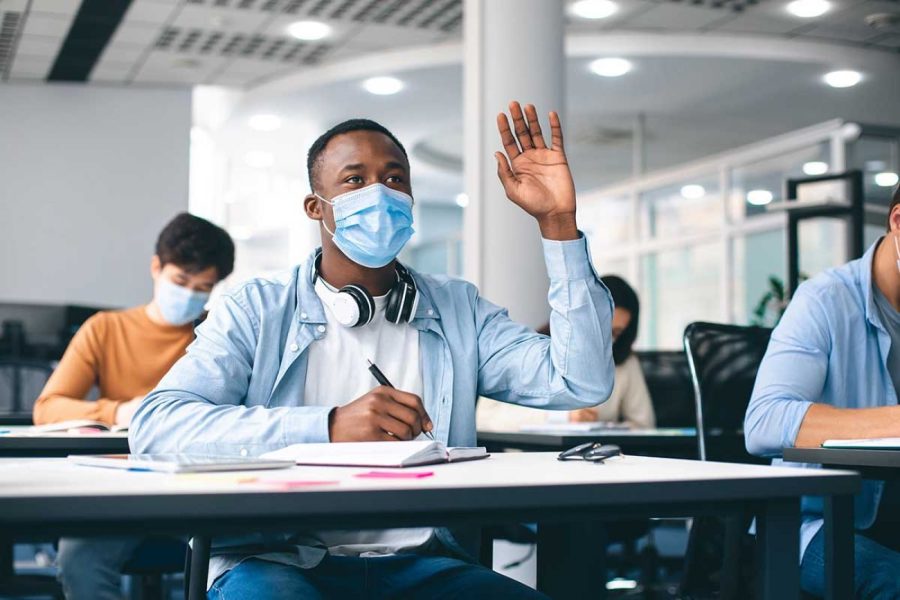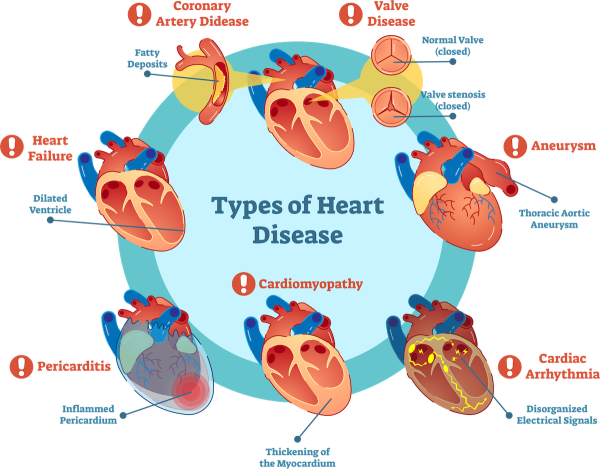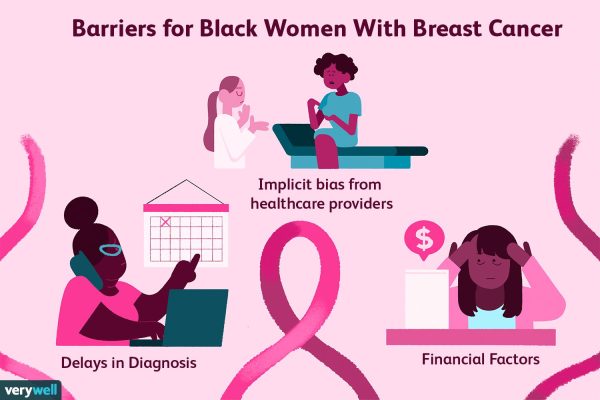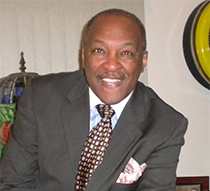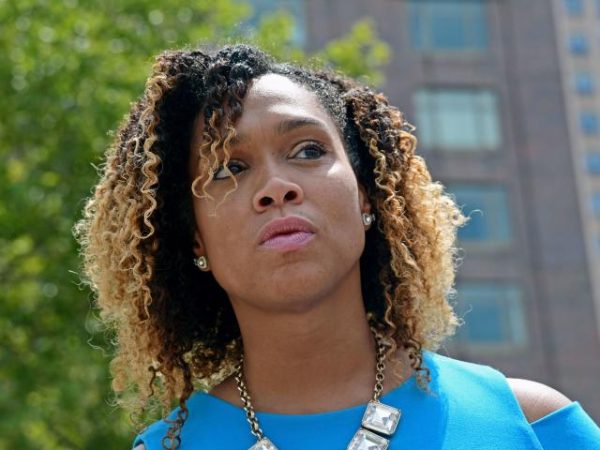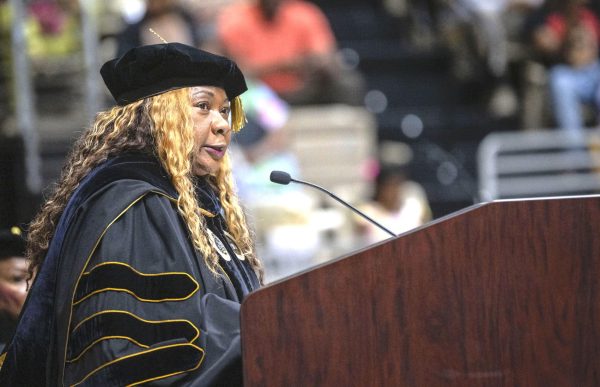Navigating student life during the COVID-19 omicron variant
Students wearing masks have almost become the norm for college students as the virus has mutated into a number of variants.
January 15, 2022
It is no surprise that staff and students are deeply concerned about the highly transmissible Omicron variant of the COVID-19 virus. Communities around the nation waited in angst in the fall of 2021, when most students and administrators returned to in-person learning.
The beginning of the academic year was relatively uneventful thanks to adherence to the Centers for Disease Control and Prevention (CDC) protocol, vaccine increase, masks, social distancing in classrooms, and, in more fortunate cases, improved ventilation in the classroom. However, the holiday season brought more than “joy to the world” last year, as it saw the emergence of the highly contagious Omicron variant, which caused a worldwide surge in cases and localized community spread, leading to increased infection rates within schools. It has been over two years since the emergence of the global pandemic, and it seems there is visually no end in sight as a new variant has yet again begun infecting youth and elders alike.
Understanding the Omicron variant is vital in reducing the spread. According to information provided by the CDC, “The great increase in daily cases over the past several weeks is largely related to the Omicron variant, which now represents about 98% of the COVID-19 cases in the country.”
A Kaiser study shows Omicron has half the risk of hospitalization, 74% less risk of ICU admission, and 91% less risk of death. However, the staggering rise in cases, over 1 million new cases each day, has led to a high number of total hospitalizations.
Current mandated vaccines are predicted to protect against severe illness, hospitalizations, and deaths due to infection with the Omicron variant. However, breakthrough infections in fully vaccinated people are still possible and likely to occur.
Many students feel there is no straightforward answer regarding the opening or closing of schools entering into year three of the COVID-19 pandemic. What is for certain is that, as Omicron cases continue to climb, more children than ever are being hospitalized as the health care system is overwhelmed. While schools are not seen as disease vectors, no indoor gathering space is immune to Omicron. On the other hand, if schools were to close, even temporarily, there would be economic ripple effects as guardians would have to take time off from work to be at home and children suffer from learning loss and social isolation.
Like those at ASU, many college students feel that closing the university would be a detriment to their academic ability. Some students recall the quarantine learning experiences they had in the past as being dreadful.
“Virtual learning is useful, but not successful,” notes junior criminal justice major Kiasa Brown. “It honestly never really worked out well for me. I find there to be too many distractions and no motivation to complete the work when I’m at home in bed and in class online. One of the reasons is the lack of preparedness for it. At home, there is also the unavailability of books and technology for a lot of students.”
In addition, there are faculty members at ASU who seem to be well adjusted to the in-person experience and see no fault in continuous learning in the classroom with the proper protocol in place.
“The students seem to be more internet-based. However, I do not prefer the informality of online classes. When students are in class, there is pressure and more motivation for them to do the work. I love it. I enjoy interacting with students, so I have been enjoying the in-person classes,” said Shreekumar Pillai, Ph.D., a professor in the department of biological sciences.
“Having classes in-person has been beneficial for students who struggle with focusing on online platforms and completing work. However, it is difficult to decide whether or not the safety of students is ensured with the risk that comes along with in-person contact. Personally, I find that teaching students in person is a more enjoyable experience overall. That sense of community has been missing from our lives for over a year now, and it is nice to return to campus,” said R. Williams, Ph.D. from the department of computer sciences.
Contrastingly, many professors who feel as though classes should remain virtual maintain a consensus about in-person classes being unnecessary, as students can obtain useful instruction in an online format, free from the potential risk of getting sick. Here are some words from the faculty who are opposed to classes continuing face-to-face.
“Given the fact that we have an unpredictable virus that is evolving daily and infecting all ages, we should in fact be teaching classes online. COVID-19 is killing people, and there is no studying without a life. We should be taking it much more seriously,” said Carlos Morrison, Ph.D., department of communications.
“It’s a complicated issue, because I know the student body desperately wants to be on campus having in-person classes, so I understand the decision of the administration to do so. Personally, I enjoy teaching in person, and my students get more out of it. However, I think it’s incredibly unsafe, and people should be taking it more seriously.” said Mark Hill, Ph.D. (full professor) from the department of language and literature.
ASU has taken several precautions during the pandemic, including requiring a negative COVID-19 test for those students who returned to campus for the spring of 2022, implementing random testing throughout the academic year, off-campus isolation and maintaining mask mandates on campus.
Experts from Johns Hopkins University weigh in on the issue of communication and urge students, teachers, and families to remain safe during this global spike.
“Given that this is year three of the pandemic, we need to find a better way to prepare for a possible onslaught of future variants that could continue to disrupt our schools,” said Annette Anderson, deputy director of Johns Hopkins Center for Safe and Healthy Schools. “Our current situation demonstrates a missed opportunity for better transparency and communication. Parents are frustrated by ambiguous, sometimes contradictory messaging. I think it’s important to note that some parents and school staff who are now calling for a pivot to remote learning feel gaslit and condescending in conversations with some public health professionals.”


